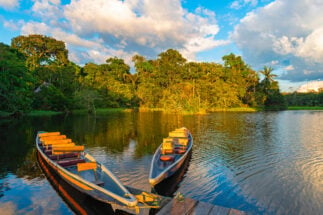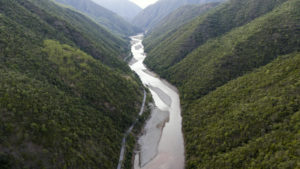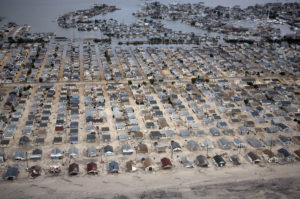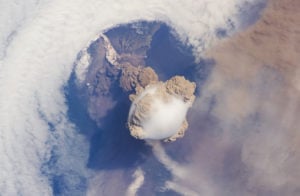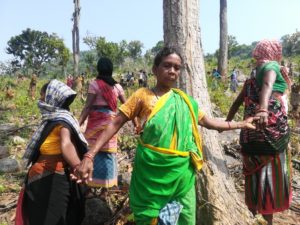As they continue to struggle with the pandemic, developing countries face urgent and intertwined crises due to climate change, biodiversity loss and sovereign debt. However, this provides an unprecedented opportunity to tackle these challenges simultaneously, putting the economy on a sustainable and resilient track.
The fiscal impacts of the Covid-19 pandemic have strained governments’ abilities to service their mounting sovereign debts, pushing many countries such as Argentina and Ecuador towards the risk of default. Debt service in 2020 and 2021 will cost over $3 trillion across emerging economies, raising concerns about debt sustainability.
$3trillion
the cost of debt service in 2020 and 2021
As with the economy, the environment is also under stress. Nature accounts for more than one-quarter of wealth in lower-middle-income countries, a 2018 World Bank report said. But these economic assets, some of which are irreplaceable, are being lost at an alarming rate. Human activities have altered three-quarters of the Earth’s land surface and two-thirds of the ocean area.
Sovereign debt markets have so far lagged in integrating environmental considerations into their operations but attention is now turning to new instruments. A coalition of environmental and finance experts, grouped under the Finance for Biodiversity Initiative, is calling for action to address the triple crisis of debt, climate change and biodiversity loss.
“Finance ministers argue they need money to pay for social security, while environment ministers say the money that was earmarked for nature was rushed aside to meet debt payments,” said Ashley Gorst, an engagement manager at Vivid Economics.
“New bonds could generate liquidity and help manage countries’ natural capital in a sustainable way.”
The need to improve the sovereign debt system was part of the discussions at the World Bank and International Monetary Fund (IMF) Spring Meeting this week. Over the course of the next year, the institutions hope to develop concrete proposals ahead of crunch climate (COP26) and biodiversity (COP15) summits.
Multilateral creditors are the largest source of debt for developing countries and they have already expressed support for new debt mechanisms that account for biodiversity. With them on board, bilateral creditors such as China could follow. This could make a big difference for Latin America, with many biodiversity hotspots across the region.
“The finance sector is calling for the environment to be considered as part of sovereign debt. China has to get involved but it won’t if others don’t join too,” Elizabeth Aceituno, a sustainable finance specialist at WWF, said.
“Latin America can’t ignore this, with the economies of many countries of the region relying on natural resources.”
A full-scale restructuring
Multilateral creditors and developed countries have already taken a first step by suspending debt repayments. The IMF approved in 2020 immediate debt relief to the 25 poorest developing economies, while G20 leaders, including China, introduced a Debt Service Suspension Initiative (DSSI) that applied to 73 low-income developing countries.
While this provided short-term debt relief, it didn’t address the biodiversity crisis. For the first time ever, there are now calls from countries, organisations and creditors for a round of inclusive and green debt restructures. These will seek to have new sovereign debt instruments that consider the importance of so-called ‘natural capital’.
Over the last 40 years, governments have negotiated debt-for-nature swaps in which repayment obligations were reduced if the debtor country agreed to spend the savings on nature conservation. Many Latin American countries participated, leading to natural parks and reserves being expanded across the region.
Finance experts now consider these too small to relieve today’s debt and environmental crisis. Their value totalled around US$2.6 billion between 1985 and 2015. Furthermore, they tied spending of the proceeds to environmental measures, with today’s indebted countries asking for help to reduce poverty, tackle fiscal deficits and fuel recovery.
Governments, businesses and investors now realise that the wealth and well-being of nations depend on the health of nature. 2021 is the year in which we must act decisively
“Swaps are now seen as small scale and with heavy transaction costs. Now there’s a need for approaches with a much bigger scale,” Paul Steele, an economist at the International Institute for Environment and Development (IIED), said. “Swaps were ear-marked for nature, while nature performance bonds can be used for more general fiscal purposes.”
For this reason, attention is now turning to new instruments. The Finance for Biodiversity Initiative is proposing to use nature performance bonds, a more flexible evolution of the swaps. Countries that achieve environmental outcomes could have their debt payments reduced and use the savings discretionarily according to their own pressing priorities.
This would incentivise the debtor to achieve positive outcomes, rather than insure against adverse outcomes. Many environmental outcomes could be used as part of the bonds, such as biodiversity targets, land degradation or even climate goals, like those included in the country’s Nationally Determined Contributions (NDC).
“Governments, businesses and investors now realise that the wealth and well-being of nations depend on the health of nature. 2021 is the year in which we must act decisively, and practically, to tackle these challenges in a holistic way,” said Carlos Rodríguez, CEO of the Global Environment Facility and a former Costa Rican environment minister.
A sovereign debt facility
Finance experts acknowledge that a major international effort will be needed to change the way sovereign debt now works. With that in mind, Finance for Biodiversity has created a working group on nature and debt with representatives from international organisations, multilateral development banks, NGOs and others.
They have proposed to create a Nature and Climate Sovereign Bond Facility, which would bring together debtor and lender countries to establish agreements that tie sovereign debt relief to green and inclusive growth.
The Nature and Climate Sovereign Bond Facility has already been working with Pakistan and Uruguay, which are currently analysing the issuance of a bond tied up to environmental indicators. The IIED also has a separate program through which they will be working with four African countries and their creditors.
Meanwhile, the IMF is discussing issuing the equivalent of US$650 billion in liquidity, known as special drawing rights (SDRs) into the global economy. As well as debt vulnerability, biodiversity and climate change should be considered as part of the criteria to allocate the funding, campaigners have argued.
The IMF and the World Bank will also soon launch a platform to advise poor countries on funding climate and conservation activities, according to a draft document released at this week’s Spring Meetings. The advisers would include UN officials, NGOs, private investors and rating agencies.
“Corporate debt markets have seen an explosion of interest on green bonds, which work just like the nature performance bonds we are now proposing. We are in an innovation moment regarding sovereign debt and we need solutions that can be used quickly,” said Gorst.
“What happens in corporate markets usually ends up happening in sovereign markets.”


